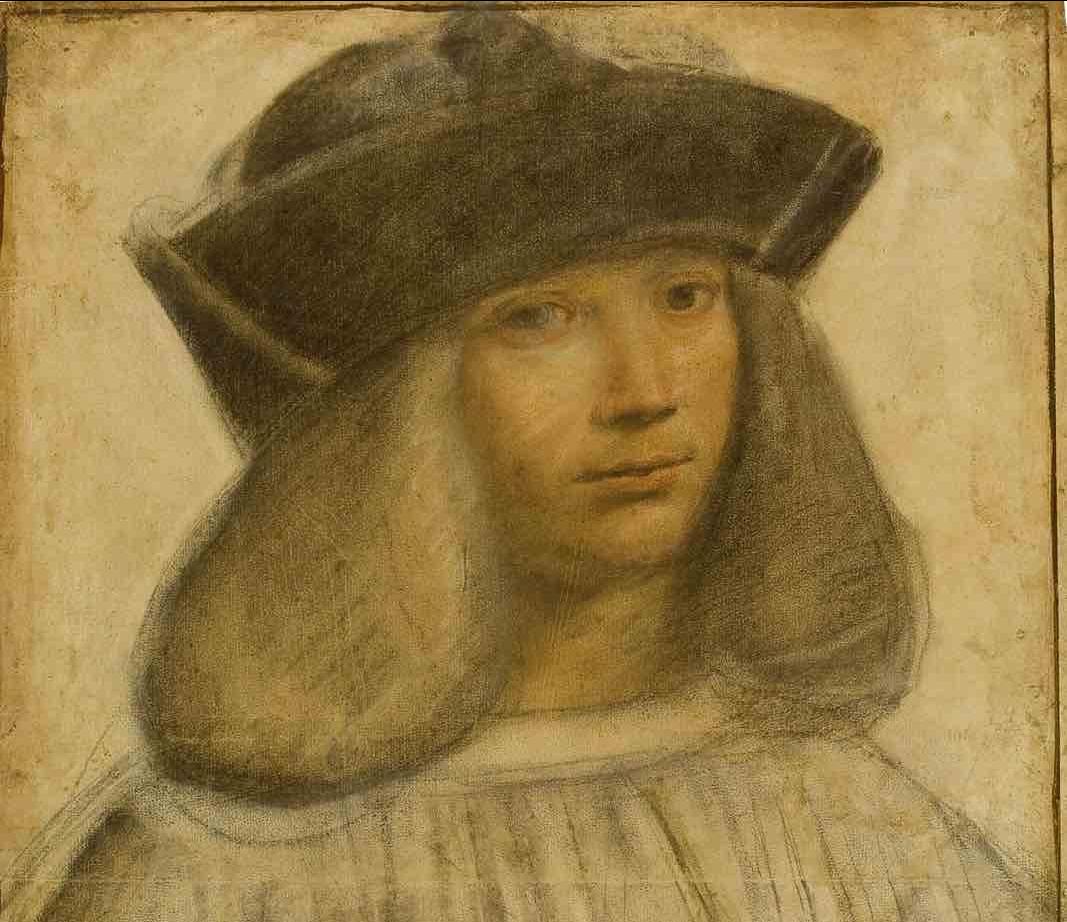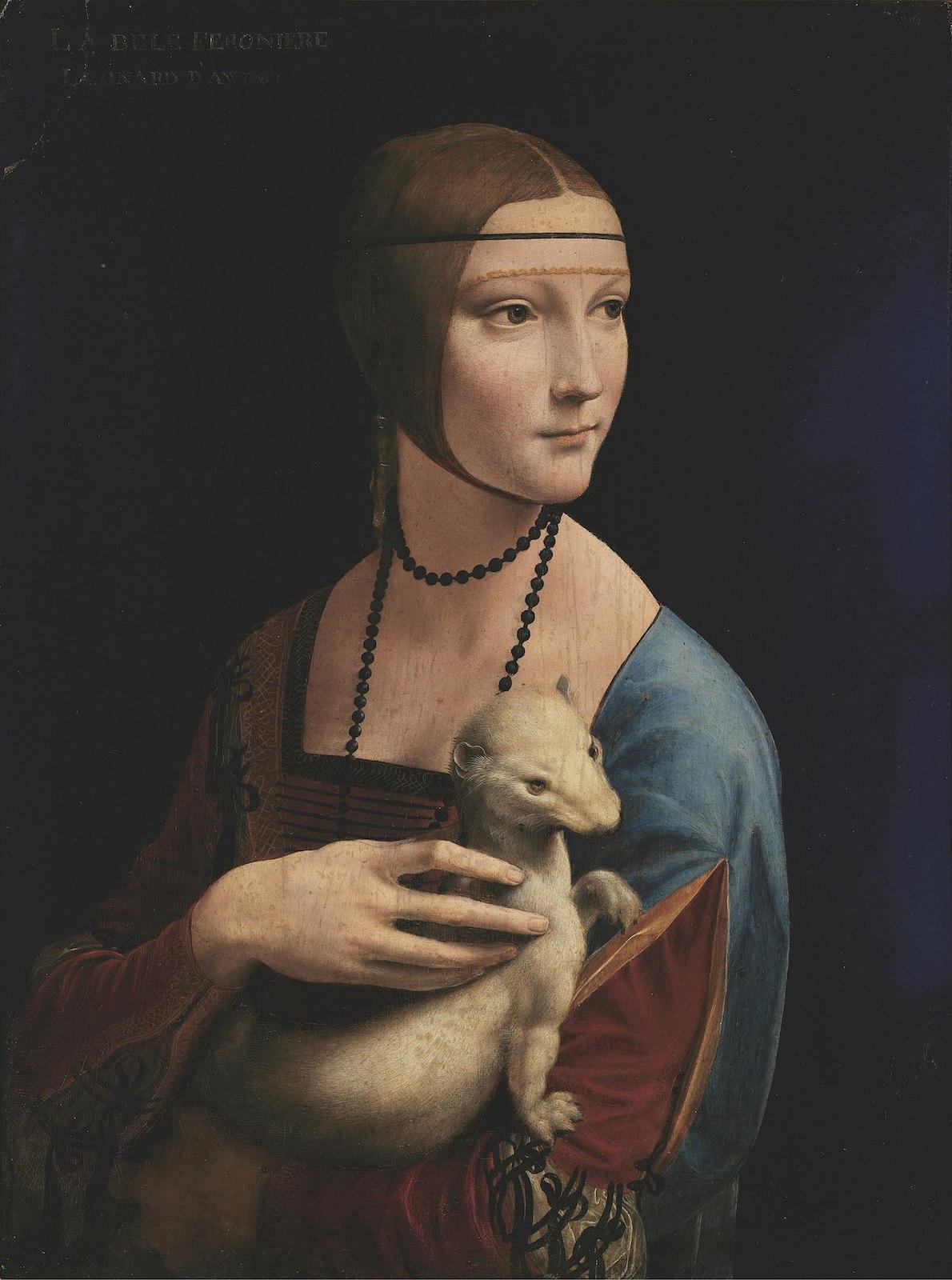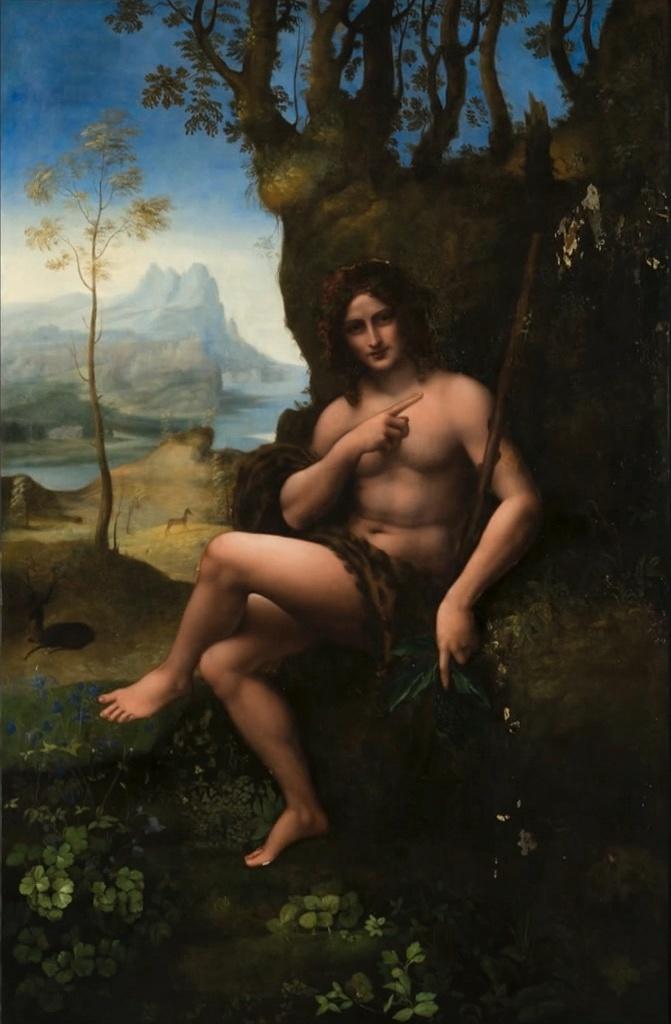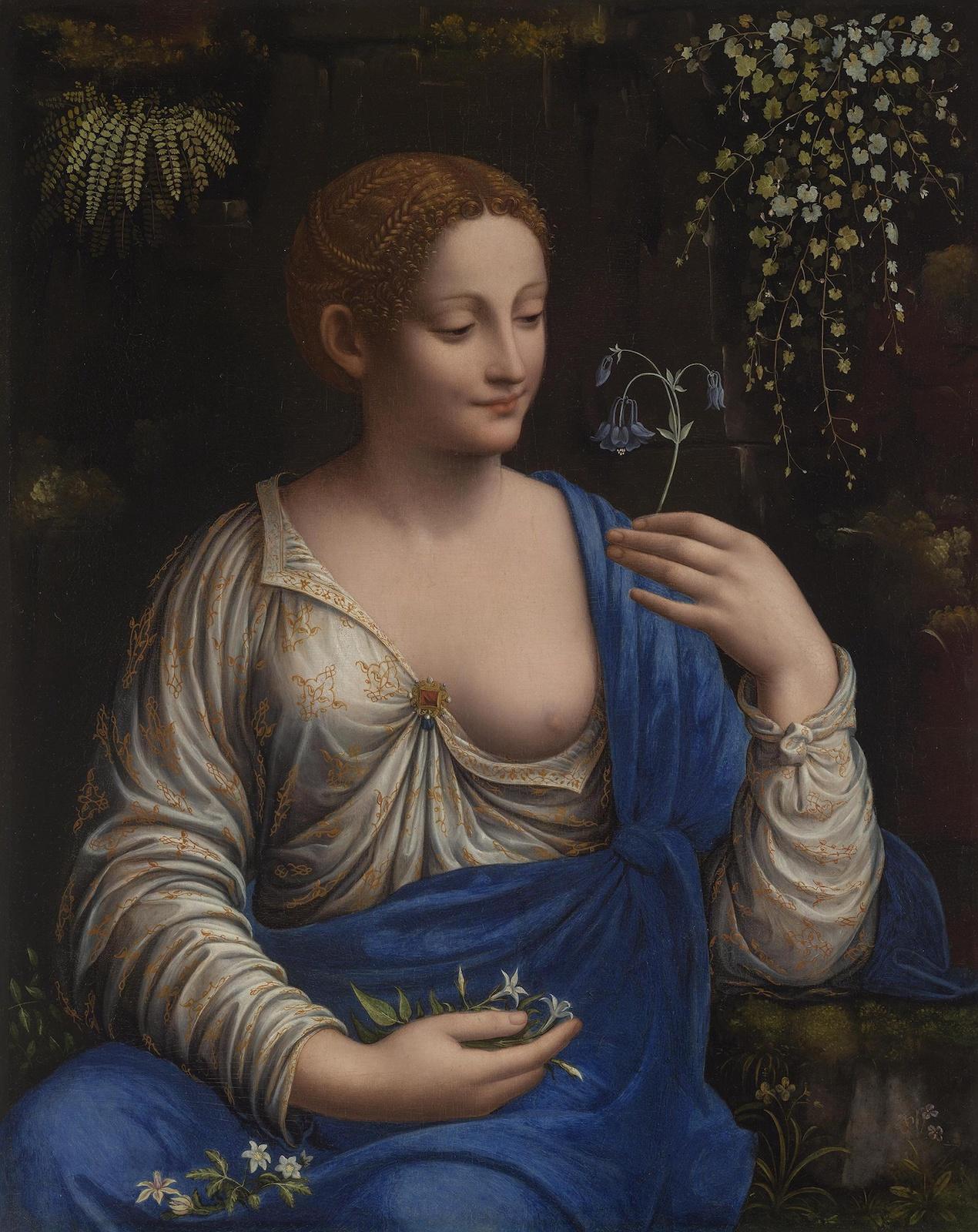While Greek mythology eventually fell out of religious and cultural practice, the concept of the muse remained firmly ingrained in the collective artistic mind. Although, by Leonardo’s time, artists no longer specifically called for Calliope, Clio, Erato, Euterpe, Polyhymnia, Terpsichore, Thalia, or Urania, they did find inspiration from the people within their life. Thus, a muse became understood as the embodiment of creative intellect; the driving force behind artistic output.

Giovanni Antonio Boltraffio, Franceso Melzi, 1510-1511. Charcoal, white chalk, and chalks of various colors on prepared paper. Ambrosian Library.
As one of the most prolific innovators of the Italian Renaissance, Leonardo da Vinci’s talent knew no bounds. Integrating the arts and sciences within his work as a painter, sculptor, engineer, draughtsman, and theorist, Leonardo’s polymathic brilliance is captured in a variety of mediums and writings. While his notebooks explore artistic and scientific interests, minimal autobiographical insights are scribbled between the lines.
He made a name for himself as a man curious to understand the world around him. And yet, we are left to wonder what inspired one of the greatest geniuses the world has ever seen. Was there a particular presence who propelled this Renaissance man's artistic genius? Who were the muses of Leonardo da Vinci?
To have a muse within one’s atelier was not a new phenomenon in the Renaissance. In fact, the notion’s origins stretch back to the mythology of Greek antiquity. The Nine Muses–daughters of Zeus and Mnemosyne and the entourage of Apollo–were the personifications of inspiration for the arts and humanities. Scholars, poets, and artists would call upon a specific sister and ask for divine revelations to seep into their work.

Leonardo da Vinci, The Lady with an Ermine (Portrait of Cecilia Gallerani), circa 1490. Oil and Tempera on Plank. National Museum in Kraków.
When we think of Leonardo da Vinci’s most notable works, it might be easy to assume that his muses were the women behind the Mona Lisa (Lisa Gherardini), Lady with an Ermine (Cecilia Gallerani), and La belle ferronnière (Lucrezia Crivelli). One may therefore be surprised to discover that his pupils, Gian Giacomo Caprotti and Francesco Melzi, have the honor of this distinguishment.
Gian Giacomo Caprotti—known by the endearment Salaì (little devil) for his mischievous and ill temperament—was a pupil of Da Vinci’s. Starting as an assistant at ten years old, Salaì held many roles during his quarter-century-long tenure. He went from student to model to servant, to longtime companion, to possible lover.

Leonardo da Vinci and workshop, St. John the Baptist or Bacchus, 1510-1515. Oil on panel transferred to canvas.
In famed art historian Giorgio Vasari’s The Lives of the Artist, Salaì was described as “a pleasingly graceful and handsome boy… with beautiful, thick, curly hair which greatly pleased Leonardo.” Mentions of his name and small sketches are smattered throughout Da Vinci’s notebooks. The most memorable of Salaì’s appearances seems to be his role as the titular figure in St. John the Baptist and Bacchus. The large doe eyes, billowing curly hair, and impish smile are trademark features of Da Vinci’s portraits of Salaì.
While an artist in his own right, Salaì never gained high acclaim or notoriety for his work. Like many other famous muses, his role as a beacon for another’ artistic intellect and visual subject overshadows the contributions from his oeuvre in the art historical canon.
Francesco Melzi, perhaps one of the most accomplished of Da Vinci’s pupils, came under his tutelage in 1508. After quickly obtaining status as the favored pupil of the artist's workshop, Melzi worked alongside and accompanied Da Vinci until the master artist’s death in 1519. While we see their relationship as strictly familial, the mutual influence these two artists had on each other is undeniable. Nearly aesthetically indistinguishable from Da Vinci, Melzi’s talent bursts through his paintings, as seen in Flora. Unfortunately, much like Salaì, Melzi’s career never truly broke free from the genius of his master.

Francesco Melzi, Flora, 1520. Oil on panel transferred to canvas. The Hermitage Museum.
Diverging from the traditional responsibilities of a muse, Melzi was entrusted by Da Vinci to carry on the legacy of his work. Without Melzi, the full breadth of Leonardo da Vinci’s oeuvre might not have survived, as he was named the sole proprietor of Da Vinci’s estate. Gathering and cataloging the great artist’s sketchbooks, manuscripts, paintings, and other plans within A Treaties on Paintings, Melzi helped secure the evidence of Leonardo’s artistic and scientific genius for future generations.
The students and muses of this celebrated Renaissance man, Salaì and Francesco Melzi are inextricably intertwined with the life and work of the Old Master that they informed and inspired.




























